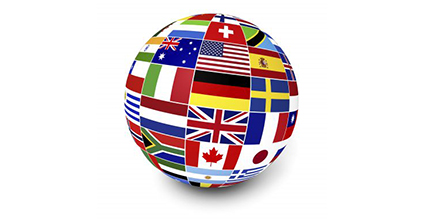It’s fair to say that we’ve embraced a multicultural society made up of many beliefs and cultural practices. Yet, some brands may be not be making the most of this great big melting pot. Cultural events in particular offer brands the chance to boost customer engagement, relevance and loyalty, helping them to stay ahead of the game in a crowded marketplace.
From religious celebrations like Christmas, Eid and Chinese New Year to the more manufactured events like Valentine’s Day, Halloween and Black Friday, our calendar is full of a whole host of different cultural events. But while there’s lots to choose from, some brands are missing out on the chance to use these celebrations to connect with their customers.
Cultural holidays: Ramadan 2018
It may come as a surprise to some that after Christmas and Easter, Ramadan is the third largest season for businesses in the UK. The Islamic economy – spanning fashion, food and media – is set to be worth a cool £3 trillion by 2021. Businesses need to sit up and take note.
As the Islamic market continues to grow around the world, UK supermarkets have ramped up their promotions, with many offering special Ramadan staples. While this is a step in the right direction, brands – both online and on the high street – could be doing much more.
Interestingly, research by Ogilvy Noor revealed a whopping 62% of UK consumers feel they aren’t being served well around Ramadan. It’s also been predicted that Ramadan spend is worth more than £200 million a year. This provides brands with a real potential to reach an untapped market.
Big potential, little uptake
Brands can’t afford to think of promotions around cultural holidays as simply ‘nice to have’. The focus needs to be on targeted engagement. Today’s consumer is more sophisticated in their shopping tastes and we’ve come to expect products tailored to our own needs and lifestyle.
For example, a consumer may be looking for a Father’s Day card for a family that consists of two fathers. A card shop on the high street providing exactly what this consumer needs is more likely to see that customer come back through the shop door, especially on future Father’s Days. This is the type of targeting all brands should be striving for.
Building consumer loyalty and an emotional connection is the recipe for success. In an age of social media, where brands can fly or flounder on their reputation, it’s more important than ever that brands give their customers exactly what they need, when they need it. But the million dollar question is how to turn words into action and include cultural events into your consumer promotion calendar.
Identify the goal
Before beginning a promotional campaign, it’s of course important to understand what the ultimate goal is. And from here, how this ties into cultural holidays and events throughout the year.
For example, they might want to be more emotionally relevant or highlight their corporate social responsibility. Or perhaps there’s just big demand for a brand’s service? Take Manchester as an example, where 16% of the population is Muslim. This number is much higher than the average for both England and Wales. Not surprisingly, the big players like John Lewis, Hotel Chocolat and Dune are all looking to pack a punch with their shoppers by producing bespoke Eid ranges in the Manchester area.
On a national level, Tesco has produced more than 200 products for Ramadan, advertising across 300 stores. Clearly, the company has recognised the importance of food during this holiday and catered to the needs of its customers.
But before brands get stuck in, they need to work out which type of promotions work best, not only for the various cultural holidays and events, but also for the products they want to sell.
The Ramadan period in the run up to Eid usually sees a spike in travel, food, charity and retail, according to research published in Exponential Interactive (see image). The findings also revealed that volume-based promotions are the most popular as the majority of consumers are still drawn to a ‘buy one get one free’ sale.
While brands have plenty of choice, it’s important to keep their finger on the pulse when it comes to what works best for their customers during the holidays. For example, launching a Try me free promotion when consumers are feeling the pinch is a great way to inspire them to switch brands or try a new product risk-free.
Gift with purchase is also great for brands looking to reward their customers’ loyalty with a little something – and instant gratification is always a winner! The beauty of this type of promotion is that it rewards impulse buys and encourages repeat customers.
Money off next purchase is more about changing customers’ buying habits and is a really handy way to reward loyal customers who are getting ready for the holidays. If customers feel like they’re getting something extra from a brand, they’re more likely to come back again.
Collector Promotions, meanwhile, is all about repeat sales. Giving customers extra points or offers during Ramadan can help to build loyalty at a time when their focus is on getting the most bang for their buck.
Ultimately, brands that think outside the box are the ones most likely to get ahead of the competition. Successful promotions are all about giving people what they want, when and how they want it. Cultural holidays and events like Ramadan are not just great for the general buzz they create, they also give brands the perfect opportunity to connect with their customers and attract a wider, diverse group of people to their products. Now that’s definitely something to celebrate.
Have an opinion on this article? Please join in the discussion: the GMA is a community of data driven marketers and YOUR opinion counts.
